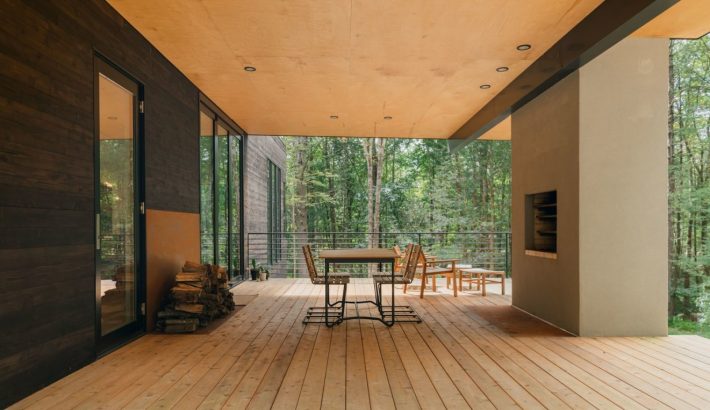A Window to Better Living: Four Projects That Embody Patterns of Biophilic Design
Research shows that views of nature aren’t just beautiful, they’re healing, too.
Most people agree that nature views filled with greenery, trees, and lakes or oceans are calming and restorative, but they might not know that the reason for this is tied to our evolutionary psychology. Going back to our days living on the meadow and savannah, humans have sought certain elements to feel safe, secure, and emotionally balanced. Design that intentionally connects people to nature—a practice commonly referred to as biophilic design—incorporates materials found in nature, daylight, and views to the outdoors to improve well-being. Considering that we spend over 90 percent of our time indoors, buildings designed to maximize the calming effects of nature are needed now more than ever.
From siting that prioritizes a view of the setting sun or lush vegetation, to the creation of cozy spaces of refuge, to incorporating materials and elements of nature indoors, and more, these four projects embody the core elements of biophilic design.
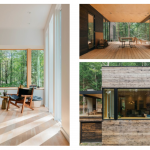 Tinkerbox, Hudson Valley, New York
Tinkerbox, Hudson Valley, New York
Designed with materials inspired by nature and grounding views that connect with the outdoors, architect Marica McKeel, Principal, AIA, Founder of Studio MM and her husband Brock designed a private retreat that maximizes views to the south-facing façade, where the sun sets in the evening.
Expansive windows create an intimate connection to the wooded landscape, and a bench seat below a Marvin corner window assembly provides a space of refuge while making the barrier between outside and inside disappear. Sitting at ground level, an expansive deck offers another opportunity to enjoy the surrounding wooded landscapes.
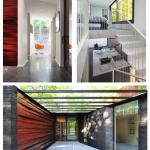 Pleated House, Door County, Wisconsin
Pleated House, Door County, Wisconsin
This house by architect Sebastian Schmaling, AIA, of Johnsen Schmaling Architects boasts a modest size, natural materials, and an earthy color palette that exist in harmony with the surrounding deciduous and coniferous forest.
With little other visual clutter, the thin profiles of the Marvin windows become clean, crisp picture frames that draw the eye outside. Throughout the home, smaller, strategically placed windows are used to draw daylight into the interior spaces and individually frame curated views of the forest.
“We were trying to create a very neutral interior backdrop against which you see the ever-changing foliage, the colors, the light, the shadows,” says Schmaling.
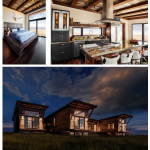 Nomadic Shack, Galloway Bay, Saskatchewan
Nomadic Shack, Galloway Bay, Saskatchewan
Designed and built by Nomadic Shack, this 2,400-square-foot cabin was prefabricated off-site to allow installation on a piece of land so remote that it would have made traditional building practices impossible.
The cabin focuses on natural materials, including a reclaimed barn wood exterior from Montana and a ceiling made of snow fence from Wyoming. Large Marvin windows frame unimpeded views in all directions, allowing a prairie-like view to envelop inhabitants.
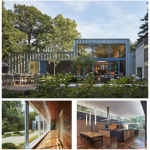 Courtyard Residence, Downers Grove, Illinois
Courtyard Residence, Downers Grove, Illinois
Chicago-based firm Kuklinski + Rappe Architects designed the interior spaces in their Courtyard Residence project to look out onto serene, landscaped areas. The home includes a “cloister” that runs along a main courtyard, offering a calming view for family members with special needs.
“The exterior spaces offer sensory experiences: A low concrete wall radiates warmth to the adjacent sitting area, a fountain with shallow basins allows soaking of hands and feet, a courtyard offers a small lawn and flowering tree, and a patio with an outdoor fireplace gives way to rolling, grass-covered berms,” says Scott A. Rappe, AIA, LEED AP.
Marvin windows clad in Cascade Blue echo the deep color of the sky, and transom windows are placed around the perimeter of the living area to allow a view to the outdoors from any position.

